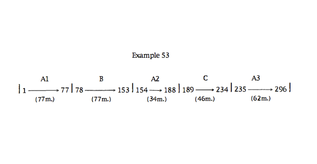MERCURY

Mercury was the last movement to be composed in 1916. Leo calls Mercury the thinker and the Winged Messenger.
Mercury…represents the silver thread of memory, upon which are strung the beads which represent the personalities of its earth lives.” In this movement the silver thread if depicted by the use of the glockenspiel and celesta. But as Holst knew from his reading, Mercury represents the mind. With peace the mind can develop ideas, and dart hither and thither in space and time. This is why Mercury appears at this point in the suite. Musically, the movement is fleetingly characterized by its opening bi-tonal possibilities, which wield in the end to a jaunty, attenuated version of the descending motif that ended Venus. The solo violin introduces a three-bar syncopated melody that is reiterated by various instruments for 70 bars, finally reaching a climax in the whole orchestra. In this manner an idea is crystalized out of the air and then swiftly spirited away.
Mercury…represents the silver thread of memory, upon which are strung the beads which represent the personalities of its earth lives.” In this movement the silver thread if depicted by the use of the glockenspiel and celesta. But as Holst knew from his reading, Mercury represents the mind. With peace the mind can develop ideas, and dart hither and thither in space and time. This is why Mercury appears at this point in the suite. Musically, the movement is fleetingly characterized by its opening bi-tonal possibilities, which wield in the end to a jaunty, attenuated version of the descending motif that ended Venus. The solo violin introduces a three-bar syncopated melody that is reiterated by various instruments for 70 bars, finally reaching a climax in the whole orchestra. In this manner an idea is crystalized out of the air and then swiftly spirited away.
 General Analysis and Outline Of Mercury
General Analysis and Outline Of Mercury
This is the quickest and, in duration, the shortest movement of the suite. Aside from its speed, however, its particular quality comes from the opposition of two simultaneous keys and two simultaneous rhythms. The two keys, which are sounded in the very first bar, are B-flat and E (which, being separated from one another by the interval of the tritone, have no note in common). The two rhythms arise out of different groupings of six beats, the first being ONE-two-three-FOUR-five-six, the second being ONE-two-THREE-four-FIVE-six. This opposition of contrasting patterns is one of Holst's principal characteristics, and other examples of it can be found not only in The Planets but abundantly throughout his works.
